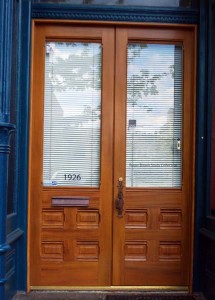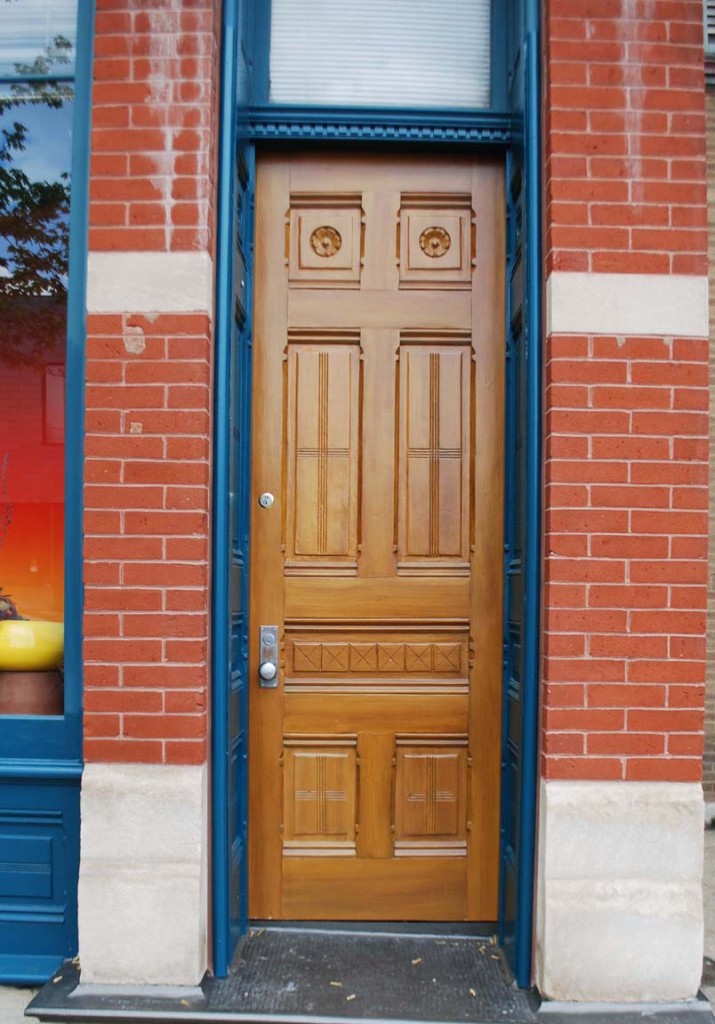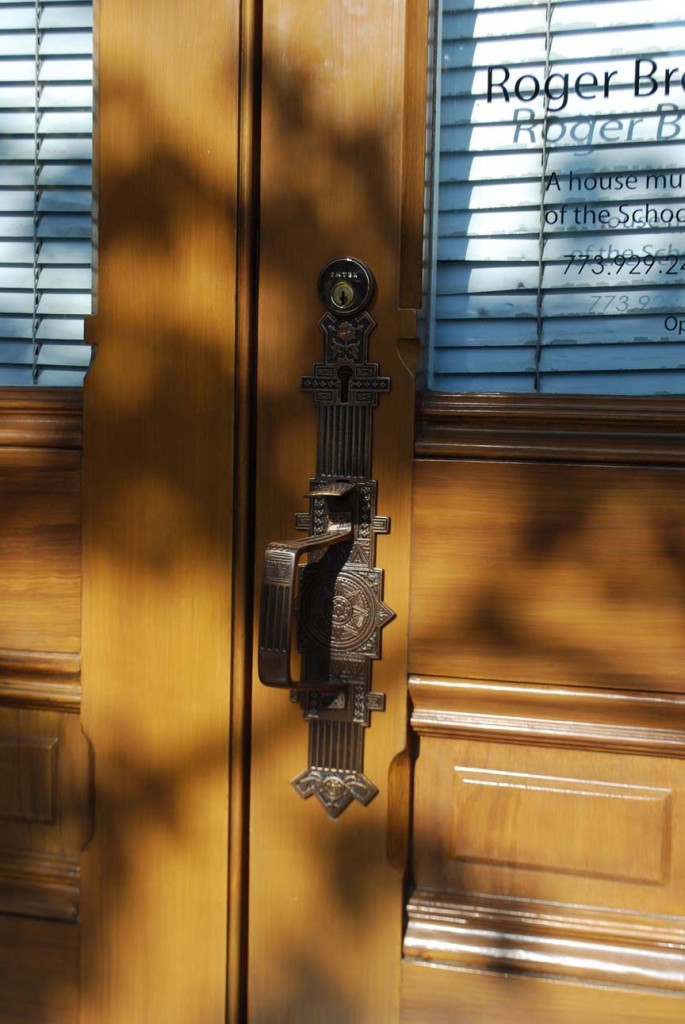The Doors
Tuesday, June 26th, 2012 » By lstone » See more posts from ALL THE NEWS
At nearly 125 years old the storefront doors and the apartment door at 1926 N. Halsted St. were perhaps the most used and abused element of the building. Having been opened and closed by countless people over the years, they had lost much structural integrity and were just plain worn out. The building had settled unevenly, both horizontally and laterally, and the north door had become almost comically out of square. Facing east, the surfaces had been taken the full force of the weather and were seriously deteriorated. The restoration project was undertaken by Neal Vogel / Restoric LLC with master carpenter Andy De LaRosa and Steve De LaRosa, and painted surfaces by Anthony Kartsonas.
 Storefront doors before restoration
Storefront doors before restoration
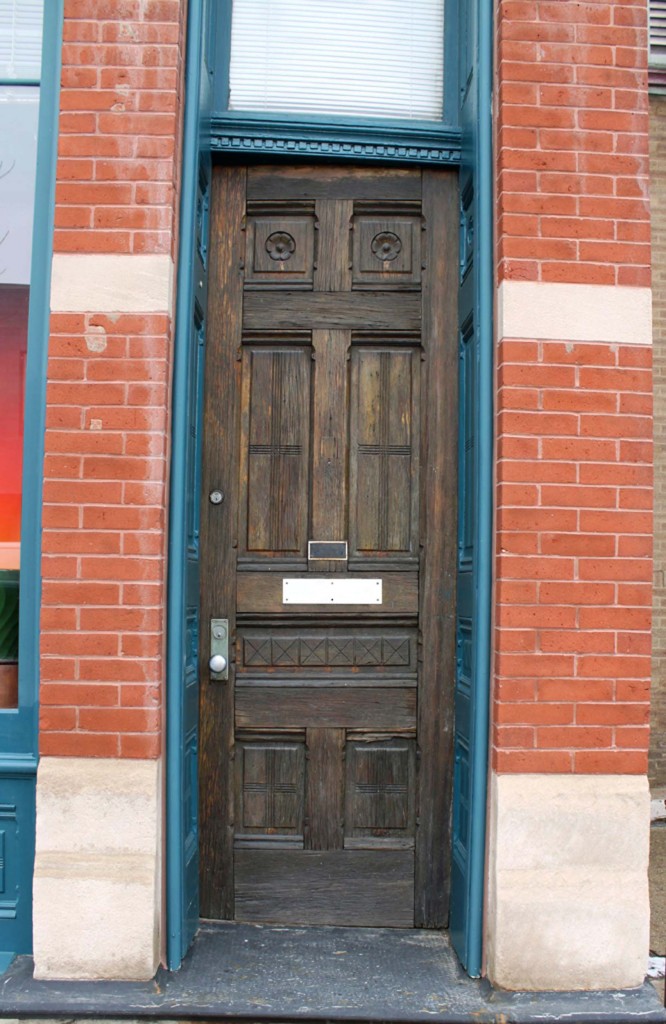 Apartment door before restoration
Apartment door before restoration
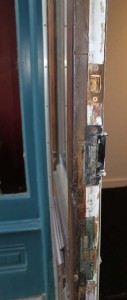 Locking hardware before restoration
Locking hardware before restoration
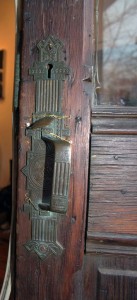 Storefront lock before restoration
Storefront lock before restoration
Like many projects to restore historic buildings, the plan seems finite at the outset and changes considerably once the project begins. The goal was to preserve, rather than replicate, all three doors and to make them structurally sound, with a surface that would hold up to the weather as long as possible. We didn’t anticipate that the apartment door frame had to be completely rebuilt, requiring modification of the carved entry panels, and modifications to the doors to accommodate for the movement of the building, so when the door is closed the opening is sealed.
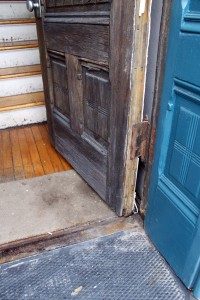 Apartment door hinge and profile before restoration
Apartment door hinge and profile before restoration
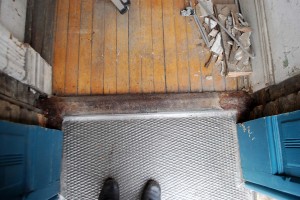 Apartment door modifications, detail.
Apartment door modifications, detail.
The apartment door and both storefront doors were found to be two doors sandwiched together, each. Andy De LaRosa explained that in the 1880s there was an abundance of wood and labor and it made sense to strengthen the doors by sandwiching two together. Using the available technology of the time, the inner and outer doors were held together by screws, no adhesive was used, a system which eventually failed, causing the doors to separate. The shifting of the door planes away from the original orientation presented the challenge of how to respect the original construction while restoring the doors to 21st century needs and goals.
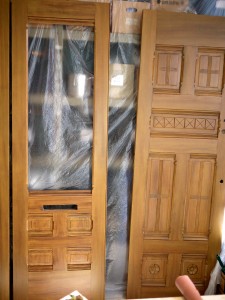 Painted doors ready for installation
Painted doors ready for installation
The original hardware had long since ceased to operate and various add-on hardware had been installed over the years. De LaRosa restored the remaining original hardware to functionality, installed new locking hardware. A new threshold was installed to prevent moisture from entering, as the cast iron porch tilts downward.
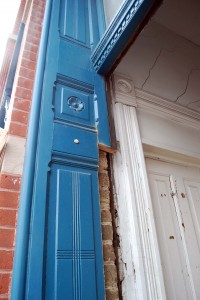 Apartment door modification for new frame
Apartment door modification for new frame
Some of the stile, panel, and rail wood had deteriorated beyond repair and had to be replaced on all three doors, so the exterior surfaces, which were unpainted, had to be painted to unify the surfaces. We preserve the building to the period Roger Brown lived and worked here, 1974 to 1995. We have but a single color photo of the building from that period, showing wood that had most likely been stripped. Tony Kartsonis applied the gorgeous, warm-toned wood grain finish.
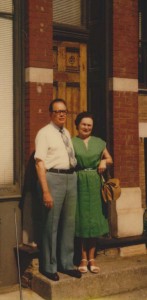 Roger Brown’s parents at apartment door, c. 1975, showing color of unpainted door.
Roger Brown’s parents at apartment door, c. 1975, showing color of unpainted door.
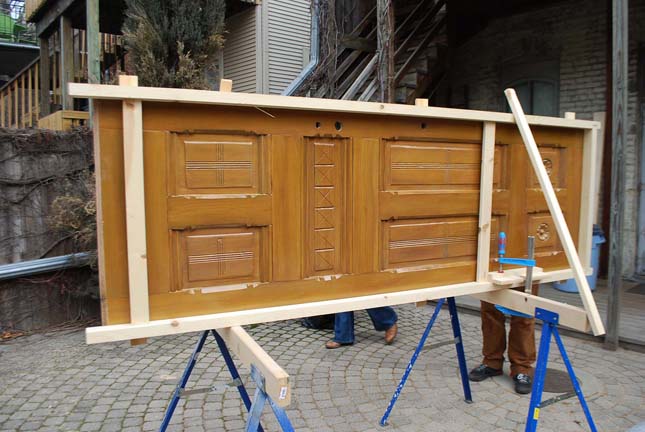 Apartment door prepared for installation
Apartment door prepared for installation
Restoric and De LaRosa shoot for at least 150 years of serviceable life until the job has to be done again. The doors––a large measure of our face to the street––are fully restored to functionality and a renewed, refreshed appearance, ready for their next century. Our thanks go out to Restoric, the De LaRosa team, and Tony Kartsonis. This project was funded by a generous donation from the Walter and Karla Goldschmidt Foundation, to whom we are especially grateful.
Lisa Stone, June 2012

